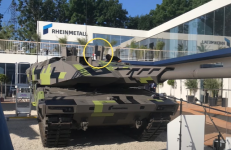IKnowNothing
Army.ca Veteran
- Reaction score
- 1,187
- Points
- 990
But that's what I'm challenging, whether a Lynx120 needs to be distinguished from an MBT, or whether it should be viewed as an MBT at the light end of the accepted spectrum. 50 tonnes, state of the art protections systems, 120mm gun.I use the term light tank to distinguish from an MBT.
I mean it sounds cool but again, whats the capability it provides that another system can't do as well? And if you have an MBT would you not use that instead of a light tank, and/or put your resources into MBT instead?
Type 10 44t
K2 55t
T-90 46t
Armata 55t
Leclerc 55t
Ariete 54t
Oplot 51t
Type 99A 55t
Lighter than Allied contemporaries, not particularly light globally.
In the short term it doesn't provide capability that the Leopard doesn't do as well. In the long term (this is the "Future" Armour thread), looking at the prospect of kitting out a fully tracked heavy brigade, and being faced with either upgrading and expanding or replacing the Leo fleet to do so
-increased strategic mobility
-reduced domestic infrastructure requirements
-increased maintenance and sustainment ability (common chassis with IFV)
Last edited:




